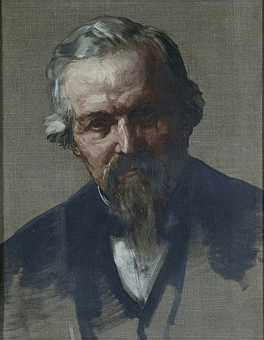John Marshall (surgeon) facts for kids
Quick facts for kids
John Marshall
|
|
|---|---|

Portrait of Marshall by Alphonse Legros
|
|
| Born | 11 September 1818 Ely, Cambridgeshire, England
|
| Died | 1 January 1891 (aged 72) Belle Vue House, Chelsea, London, England
|
| Resting place | Ely public cemetery |
| Alma mater | University College London |
| Occupation | Surgeon, teacher of anatomy |
| Known for |
|
| Title |
|
| Spouse(s) | Ellen Rogers (1854–1891) |
| Children | Two sons, two daughters |
| Signature | |
John Marshall (born September 11, 1818 – died January 1, 1891) was an important English surgeon and a great teacher of anatomy. He made many contributions to medicine during his life. He was known for his skills in surgery and for teaching future doctors.
Contents
Becoming a Doctor
John Marshall was born in Ely, Cambridgeshire, England. He was the third child in his family. In 1838, he began his studies at University College, London. This was the start of his long and successful career in medicine.
His Work as a Surgeon
In 1847, Marshall became an assistant surgeon at University College Hospital. He later became a full surgeon and a professor of surgery in 1866. He also taught anatomy at the Royal Academy from 1873 until he passed away.
He held many important positions, including president of the College of Surgeons in 1883. He also gave special lectures, sharing his knowledge with other medical professionals.
A Teacher's Impact
John Marshall was a dedicated teacher. Some of his students had different opinions about his teaching style. One student, Sir Edward Albert Sharpey-Schafer, found his lectures a bit dull. However, another student, Sir John Tweedy, strongly disagreed. He said Marshall's lectures were "informative and thought-awakening." Tweedy described Marshall as a "cultured, critical and scientific surgeon." This means Marshall was always ready to try new ideas and explore fresh knowledge.
Marshall's Big Ideas
John Marshall is remembered for several important contributions to medicine and hospital design.
New Surgical Tools
He helped bring a special tool called the galvanocautery into modern surgery. This tool uses heat to stop bleeding during operations. He also developed a new way to remove varicose veins.
Fighting Disease
Marshall was one of the first people to show that cholera could spread through drinking water. He wrote a report about a cholera outbreak in London in 1854. This helped people understand how to prevent the disease.
Designing Hospitals
He also came up with the idea of designing hospitals with circular wards. These round rooms were thought to be better for patients and easier for doctors and nurses to work in. Many modern hospital designs still use some of his ideas.
Shaping Medical Education
Marshall played a big part in shaping how medical students are educated today. He helped create the details of the modern medical student's training. This means he influenced how doctors learn their skills even now.

